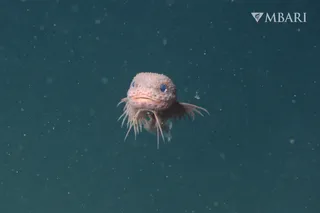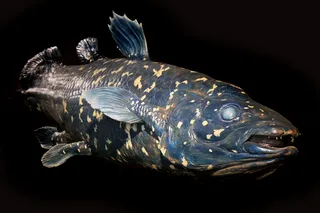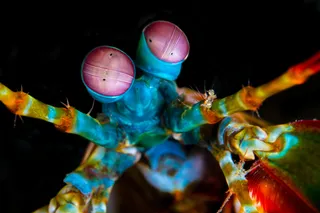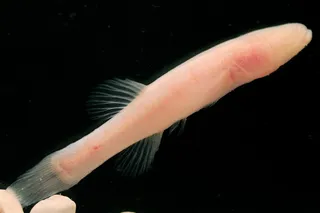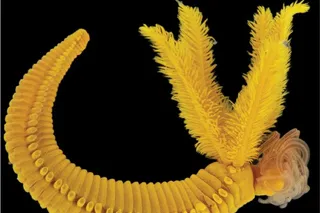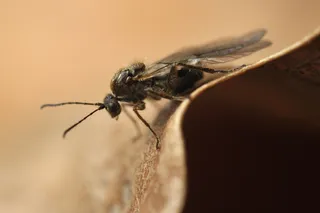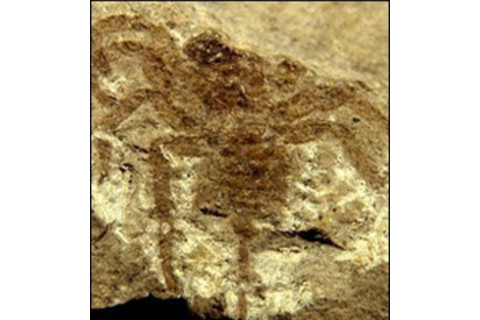
Paleontologists have taken another hard look at the fossilized remains of an arachnid that lived 386 million years ago, and have stripped away its title as the oldest known spider. The creature, Attercopus fimbriunguis, was originally believed to have the capacity to spin webs out of silk, but a reconsideration of the fragmented fossil has led researchers to conclude that Attercopus could make silk, but probably excreted it in sheets.
These proto-spiders may have used sheets of silk to line burrows, wrap eggs or even to have sex [Nature News].
Previous studies had suggested that the Attercopus had a single spinneret, the appendage that spiders use to weave silk into webs. But lead researcher Paul Selden studied newly discovered fossil fragments and realized that those previous researchers were mistaken.
The tiny hollow hairs that excrete spun silk, called spigots, are arranged in a double row on plates lining Attercopus's belly, and what had been identified as a spinneret was actually a plate folded over. Without spinnerets, the creatures could not have precisely controlled the emerging silk. "It would have been much less manoeuvrable," says Selden [Nature News].
In the study, published in the Proceedings of the National Academy of Sciences [subscription required], researchers say that the Attercopus could have found many uses for its sheets of silk: They could have used the material to reinforced the sandy walls of their burrows, or to created trails to help them find their way back home.
Today, female spiders wrap eggs in silk, and aroused males deposit sperm onto a silk structure called a sperm web. Attercopus might have done the same, says Selden [Nature News].
The new findings clear up a question that had troubled paleontologists: They hadn't understood what use Attercopus would have had for a web, because there were no flying insects to catch 386 million years ago. But as an early arachnid that could produce silk but couldn't weave, the Attercopus takes its position as a missing link on the path of spider evolution. Says Selden:
"The thing that had been called the oldest known spider we have now shown is in fact more primitive than a true spider." ... The oldest "true spider", like the ones seen today, dates from the late Carboniferous period that ended about 300m years ago, though Professor Selden says that true spiders may have existed earlier but have not yet been discovered [BBC News].
Related Content: DISCOVER: Unraveling Spider Silk DISCOVER: The First SpinnersImage: National Academy of Sciences, PNAS



